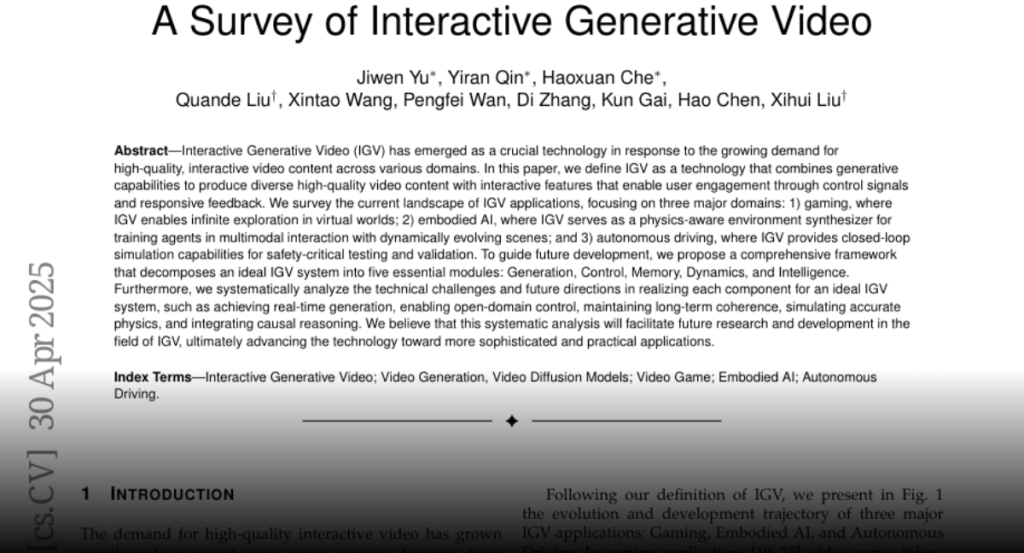Interactive Generative Video (IGV) has emerged as a crucial technology in
response to the growing demand for high-quality, interactive video content
across various domains. In this paper, we define IGV as a technology that
combines generative capabilities to produce diverse high-quality video content
with interactive features that enable user engagement through control signals
and responsive feedback. We survey the current landscape of IGV applications,
focusing on three major domains: 1) gaming, where IGV enables infinite
exploration in virtual worlds; 2) embodied AI, where IGV serves as a
physics-aware environment synthesizer for training agents in multimodal
interaction with dynamically evolving scenes; and 3) autonomous driving, where
IGV provides closed-loop simulation capabilities for safety-critical testing
and validation. To guide future development, we propose a comprehensive
framework that decomposes an ideal IGV system into five essential modules:
Generation, Control, Memory, Dynamics, and Intelligence. Furthermore, we
systematically analyze the technical challenges and future directions in
realizing each component for an ideal IGV system, such as achieving real-time
generation, enabling open-domain control, maintaining long-term coherence,
simulating accurate physics, and integrating causal reasoning. We believe that
this systematic analysis will facilitate future research and development in the
field of IGV, ultimately advancing the technology toward more sophisticated and
practical applications.

